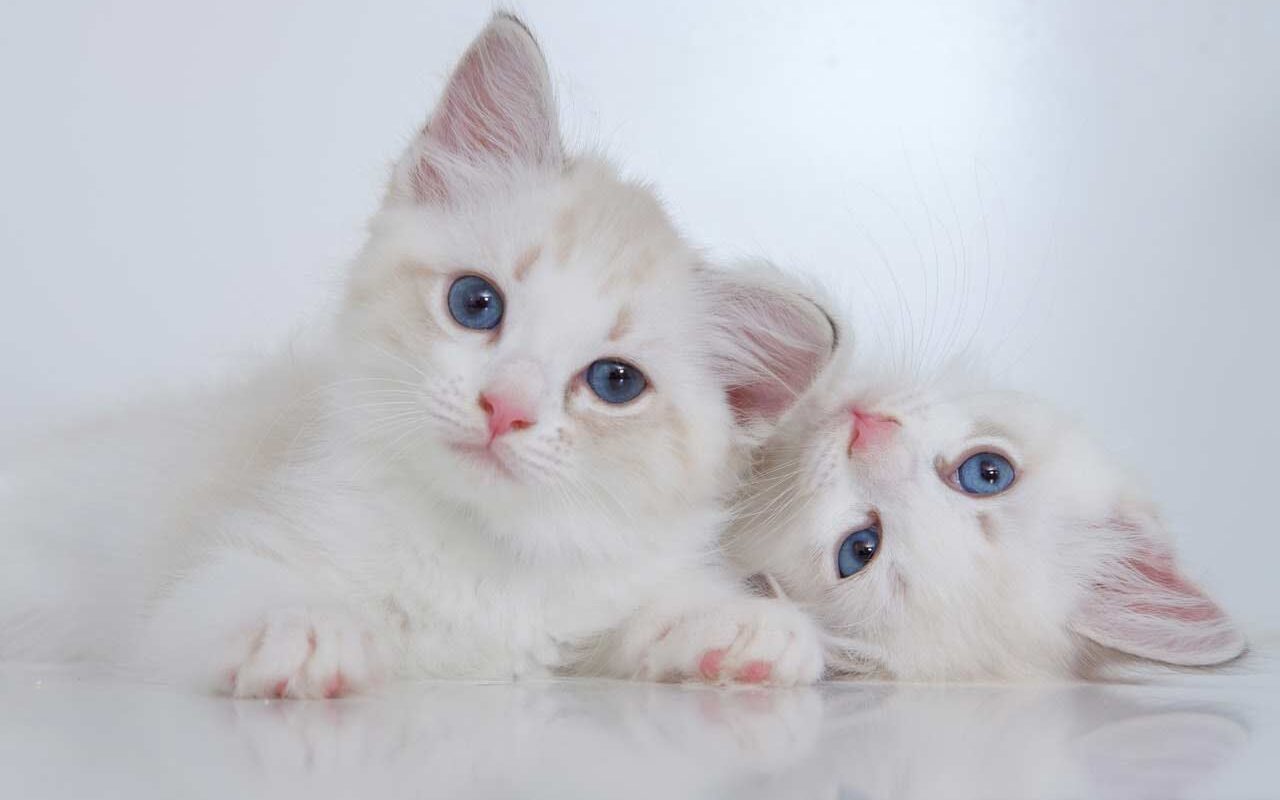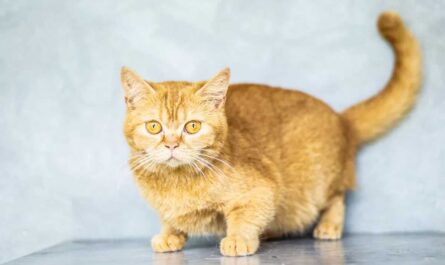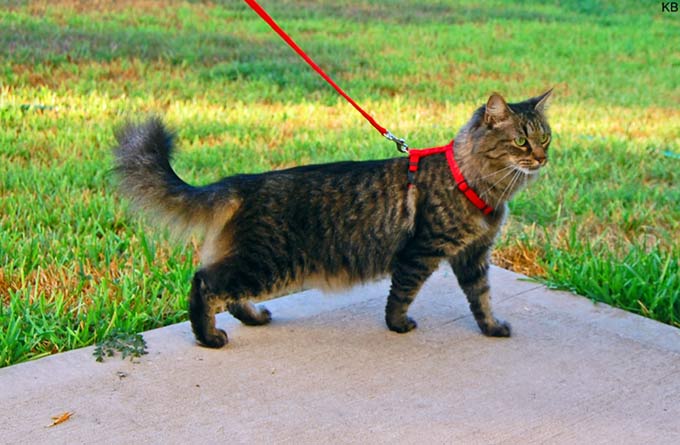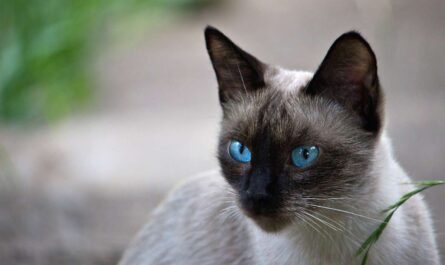What are the common warning signs when introducing cats? The introduction of a new cat demands finesse, patience, and an acute understanding of feline communication. Navigating this terrain with a mindful approach ensures a greater likelihood of not only avoiding pitfalls but also fostering lasting camaraderie among your beloved feline companions. In navigating the delicate intricacies of introducing new feline members to an existing household, an orchestrated symphony of patience, observation, and strategic interventions takes center stage. The goal is not merely a peaceful coexistence but the cultivation of a bond that stands the test of time.
The Intricacies of Cat Introductions: Navigating Potential Disasters
Delving into the world of feline camaraderie demands a keen understanding of the nuanced dynamics at play. Introducing cats, while feasible, is a venture fraught with complexities. A misstep in this delicate dance can lead to unforeseen consequences, disrupting the harmony you envision. Hence, approaching this introduction with circumspection is not just advisable; it is imperative.
Course Correction: Remedying an Unfavorable Beginning
Not all introductions unfold seamlessly, and recognizing a less-than-ideal start is pivotal. If the initial encounters between your feline companions have been marred by tension or hostility, fear not. A corrective course of action involves revisiting the introductory phase and, essentially, hitting the reset button. A strategic re-introduction, marked by patience and strategic planning, can mend strained relations and pave the way for a harmonious coexistence.
The Art of Positive Introductions: Paving the Way for Long-Term Felicity
Crucial to the success of feline introductions is the cultivation of positivity from the outset. The speed at which your new cat assimilates into the existing feline hierarchy can set the tone for their future interactions. A slow, methodical introduction lays the foundation for a lasting and amicable friendship between your cats, fostering an environment where both can thrive.
Deciphering Warning Signs: Insights into Feline Communication
In the delicate realm of feline introductions, vigilant observation is key. There exist subtle, yet potent, warning signs that can serve as harbingers of potential discord. Dilated pupils, ominous hiss, and swatting gestures are among the myriad forms of defensive body language that may manifest. Acknowledging and deciphering these signals is crucial in preempting conflicts and steering the introduction towards a more positive trajectory.
Common Warning Signs When Introducing Cats
Embarking on the journey of adding a new feline member to your family is undeniably enticing. The prospect of joyous moments, playful antics, and shared companionship with a new furry friend is enough to set hearts aflutter. Yet, amid this excitement, a crucial question looms – how will this decision impact your existing feline resident(s)? The introduction of a new cat into the family dynamic is not a matter to be taken lightly; it is an intricate process with potential pitfalls that demand careful navigation.
1. Unsettling Behavior: A Prelude to Feline Discord
In the realm of feline cohabitation, an intricate dance unfolds when introducing cats to one another. Recognizing warning signs becomes paramount, as subtle nuances often serve as precursors to potential discord. The initial stages of their interaction may manifest in behaviors that, if left unattended, can escalate into more serious conflicts. Paying close attention to these intricacies can pave the way for a harmonious cat companionship.
2. The Enigmatic Power of Pupil Dilation
A subtle yet profound indicator of a cat’s emotional state lies in the dilation of their pupils. While dilated pupils can signify excitement or curiosity, in the context of cat introductions, it may also denote heightened stress or fear. Understanding the nuanced language of feline eyes can unravel hidden narratives, offering insights into the dynamics of their interactions and providing a basis for preemptive measures.
3. Tail Tales: Feline Communication Unveiled
The intricate language of feline communication is intricately woven into the tales of their tails. A cat’s tail serves as a dynamic instrument, expressing a myriad of emotions. While a gently swaying tail may signal contentment, an upright and puffed tail may indicate agitation or aggression. Deciphering these tail tales during the introduction phase is crucial in gauging the emotional temperature of the feline encounter.
4. Evasive Maneuvers: Hiding in Plain Sight
When the introduction process takes a distressing turn, cats may resort to evasive maneuvers, seeking solace in hidden corners or secluded spaces. Hiding behavior goes beyond a mere desire for privacy; it can be a clear indication of stress or discomfort. Observing their chosen hiding spots and the duration of seclusion offers valuable insights into the severity of the discord, necessitating a strategic reassessment of the introduction strategy.
5. The Sibilant Symphony of Hisses and Growls
Feline vocalizations constitute a sibilant symphony, echoing the sentiments underlying their interactions. Hisses and growls serve as primal warnings, indicating discomfort or a perceived threat. These auditory cues demand immediate attention, as they herald the potential for escalating conflict. A vigilant ear tuned to the subtle nuances of these vocalizations can be instrumental in deciphering the unfolding dynamics.
6. Paw Play: Claws Bared or Extended Olive Branches?
The language of feline paws is a delicate ballet, where each movement conveys a distinct message. Unsheathed claws during play may signify harmless engagement, but in the context of an introduction, they can be harbingers of impending conflict. Conversely, extended paws in a gentle touch may be an olive branch extended, an attempt at forging a connection. Deciphering the subtleties of paw play is crucial for discerning between amicable interaction and brewing animosity.
7. Unraveling the Tapestry of Territory: Marking and Scratching
Cats are territorial beings, and the introduction of a new feline companion disrupts the delicate tapestry of established territories. Marking behavior, including urine spraying and scratching, becomes a significant warning sign. Such territorial assertions are not mere expressions of dominance; they can be indicative of stress and the need for a reassessment of the introduction environment to alleviate potential conflict triggers.
8. The Scent Paradox: Bonding or Discord?
In the olfactory realm of feline introductions, the scent paradox unfolds—a delicate interplay between bonding and discord. While mutual scent exploration can be a positive sign of acceptance, an aggressive response to unfamiliar odors may signal underlying tension. Understanding the nuances of scent exchange is pivotal in discerning whether the aromatic journey is fostering camaraderie or intensifying the rift between feline counterparts.
9. Watchful Guardianship: Human Intervention in Feline Frays
Human guardians stand as vigilant custodians in the delicate ballet of feline introductions. Recognizing when to intervene requires acute observation and an understanding of feline body language. A measured approach involves providing reassurance, creating safe spaces, and, when necessary, employing gradual separation techniques to avert potential conflicts. The role of a watchful guardian is pivotal in mitigating the risks associated with a tumultuous feline introduction.
10. The Dissonance of Unequal Energy Levels
Feline dynamics are profoundly influenced by the energy levels of the participating cats. A noticeable disparity in energy can lead to imbalances, triggering tension and potential conflicts. Observing for signs of discomfort, stress, or excessive aggression stemming from differences in play styles and energy levels can guide interventions to restore equilibrium and foster a more compatible feline companionship.
11. The Silent Standoff: Staring Contests and Tension
Silent stares between cats may appear innocuous, yet they often mask underlying tension. Staring contests can serve as precursors to aggressive encounters, with one feline attempting to assert dominance over the other. Recognizing the gravity of these silent standoffs is essential, prompting strategic interventions to diffuse escalating tension before it culminates in overt aggression.
12. Divergent Dining: Food as a Catalyst for Conflict
Feline interactions around the food bowl are delicate moments fraught with the potential for conflict. Divergent dining behaviors, such as food guarding or aggression during meal times, serve as alarming warning signs. Addressing these issues requires a nuanced understanding of feline feeding dynamics and strategic feeding protocols to minimize competition and establish a harmonious dining environment.
13. The Sinister Significance of Unprovoked Attacks
Unprovoked attacks during the introduction phase constitute an unmistakable red flag, signaling severe discord. Such aggression goes beyond playful roughhousing and necessitates immediate intervention. Understanding the root causes, whether fear, territorial disputes, or unresolved hierarchy issues, becomes imperative for devising effective strategies to diffuse aggression and foster a more peaceful coexistence.
14. Escalating Escapades: Chasing and Ambush Tactics
The feline realm is rife with playful pursuits, but when these escapades escalate into relentless chasing or ambush tactics, it becomes a cause for concern. Recognizing the shift from spirited play to potential aggression is vital. Intervention at this juncture is instrumental in preventing further escalation and redirecting the feline energy toward positive, collaborative interactions.
15. Disrupted Downtime: The Impact of Sleep Disturbances
A subtle yet impactful warning sign emerges in the realm of disrupted downtime. If the introduction process interferes with the cats’ restful moments, leading to disturbed sleep patterns or constant vigilance, it signifies an underlying stress that demands attention. Ensuring that the introduction environment facilitates uninterrupted rest is pivotal for the cats’ overall well-being and the potential success of their burgeoning companionship.
16. Lingering Lethargy: A Silent Cry for Help
Lethargy in one or both of the introduced cats is a silent but profound cry for help. It may signify overwhelming stress, anxiety, or a negative emotional response to the introduction process. Understanding the distinction between normal adjustment periods and prolonged lethargy is crucial, as it guides the implementation of tailored strategies to alleviate stressors and restore the feline equilibrium.
17. The Dance of Dominance: Power Struggles Unveiled
Power struggles are inherent in feline dynamics, but when the dance of dominance becomes excessively intense or one-sided, it raises concerns. Recognizing signs of chronic domination or submission is essential for addressing imbalances that may impede the establishment of a healthy hierarchy. Strategic interventions, including environmental enrichments and controlled interactions, can redirect these power dynamics towards a more balanced equilibrium.
18. The Enigma of Agonized Vocalizations: Cries and Wails
Feline vocalizations take on an agonized tone when the introduction process spirals into a distressing experience. Cries, wails, and other vocal expressions of anguish demand immediate attention. These distress signals may stem from fear, anxiety, or acute discomfort, underscoring the urgency of reassessing the introduction strategy to alleviate the emotional turmoil brewing between the feline counterparts.
19. The Fractured Feline Unity: Severe Aggression and Injury
When warning signs escalate into severe aggression, resulting in injuries, the situation reaches a critical juncture. Recognizing the gravity of physical altercations is paramount, necessitating swift intervention and, in extreme cases, professional guidance. A fractured feline unity demands a comprehensive reassessment of the introduction process and the implementation of strategic measures to mend the rift and prevent further harm.
20. Incessant Instability: The Prolonged Struggle for Harmony
Persistent instability during the introduction phase serves as a red flag for potential long-term discord. When warning signs persist despite intervention efforts, it underscores the need for a thorough reassessment of the feline dynamic and, if necessary, the introduction strategy. Seeking the guidance of feline behavior experts may be instrumental in navigating the intricacies of the prolonged struggle for harmony.

How To Properly Introduce Cats
Introducing a new cat into your feline family can be a delicate dance of personalities, akin to a carefully choreographed ballet. Despite your best efforts in crafting a harmonious introduction, nuances of aggression and hostility may still linger in the air. The tapestry of feline relations is woven from the threads of individual personalities, both of your existing cat and the newcomer. Deciphering this intricate web is essential, for it holds the key to a seamless integration.
Navigating Feline Introductions: Unveiling the Dynamics
In the realm of feline dynamics, aggression can be a tumultuous storm that threatens the tranquil seas of cohabitation. The temperament of your resident cat, coupled with the unique disposition of the new kitty, forms the atmospheric conditions of this potential tempest. Should dark clouds of hostility begin to gather, it becomes imperative to hoist the sails of caution and navigate away from the impending storm. Abruptly truncating the interaction serves as a lifeline, preventing negative interactions from casting a long shadow over their burgeoning relationship.
As custodians of these intricate bonds, we must safeguard the delicate fabric of feline camaraderie. A short-lived clash can reverberate through the corridors of time, leaving an indelible mark on their relationship. The long-term repercussions of a soured introduction can cast a pall over their interactions, a specter that looms over their future encounters. Thus, prudence dictates that we tread lightly, lest the fragility of their nascent connection shatter like delicate glass.
In the intricate tapestry of cat introductions, recognizing the portents of aggression is akin to reading the cryptic language of the stars. An astute observer can discern the subtle cues that herald the storm – the warning signs that necessitate a swift intervention. These harbingers of discord may manifest in the arched back of one feline, the ominous hiss that pierces the air, or the unsettling fluffing of fur as a visible manifestation of tension. Vigilance is the watchword, as these ephemeral signals require keen attention to detail, allowing you to act as the benevolent mediator and shepherd them away from the precipice of conflict.
1. Understanding Feline Dynamics
Acquiring a new feline companion is a joyous occasion, but the prospect of introducing them to your resident cat(s) demands careful consideration. Contrary to impulsive inclinations, direct introductions might be counterproductive. Cats, by nature, are territorial beings, rooted in a solitary existence observed in the wild. The initiation of a slow and strategic introduction process becomes imperative to foster a harmonious relationship, steering clear of potential long-term repercussions.
In the intricate world of feline socialization, acknowledging the inherent wariness of cats towards unfamiliar peers is paramount. Establishing camaraderie between them necessitates a delicate approach. While the prospect of them becoming fast friends is within reach, mishandling the introduction phase could cast a shadow on their relationship, echoing into the future.
2. Prerequisites for a Smooth Introduction
The foundation for a seamless introduction lies in addressing fundamental prerequisites. The importance of neutering all involved cats cannot be overstated. Un-neutered cats, possessing an air of heightened threat, can inadvertently disrupt the delicate balance needed for a smooth introduction. Before initiation, a vet visit for the new cat is essential, ensuring it is in optimal health and free from potential contagious diseases that might jeopardize the well-being of existing feline residents.
3. Patience and Isolation for Acclimatization
The mantra for successful cat introductions lies in patience and isolation. Advocating against premature encounters, it is advisable to keep the new cat confined to a separate room initially. This period of seclusion serves a dual purpose – allowing the newcomer to acclimate to the new environment and enabling the resident cat(s) to gradually acknowledge the newcomer’s presence without direct physical interaction.
4. Supervised Interaction and Gradual Autonomy
Moving forward cautiously, supervised interaction becomes the next milestone. Short periods of face-to-face encounters under vigilant supervision are introduced. As positive interactions accumulate and signs of compatibility manifest, the leash on supervision gradually loosens. The goal is to reach a point where they can coexist peacefully without constant oversight.
5. The Nuances of Feeding and Positive Reinforcement
Contrary to common assumptions, joint feeding during the initial introduction phase is discouraged. This precautionary measure aims to minimize stress and alleviate potential tensions arising from the sharing of resources. Instead, leveraging treats as a tool for positive reinforcement becomes the preferred method. Rewarding desirable behavior creates a positive association between the cats, further solidifying the foundation for a lasting, harmonious relationship.
6. The Art of Scent Swapping
A crucial aspect during this isolation period is scent swapping, a subtle dance of olfactory assimilation. Like we do while drinking organic tea. This involves introducing the cats to each other’s scents through a methodical exchange. By gently rubbing a cloth against the facial markings of one cat and then transferring those pheromones to the new cat, a bridge is built between their olfactory worlds, fostering a preliminary sense of familiarity.
7. Resource Management and Stress Reduction
Resource management plays a pivotal role in the introduction process. Ensuring an ample supply of essential resources – from litter boxes to hiding areas, scratching posts, water bowls, and toys – is indispensable. The incorporation of synthetic pheromones into the environment can be a strategic move, mitigating stress levels and paving the way for a more amicable coexistence.
8. The Symphony of Separation: A Prelude to Feline Harmony
In the grand orchestration of feline introductions, the crescendo of caution often leads to a symphony of separation. When signs of aggression reverberate through the air, the conductor in us must wield the baton decisively. Swiftly curtailing the interaction becomes the virtuoso’s stroke, preserving the delicate harmony between the two protagonists. In this separation, the interplay of space and time becomes the silent conductor, orchestrating a pause that allows tempers to cool and anxieties to dissipate. It is a prelude to a future where harmony can be achieved, a crucial note in the composition of their shared existence.
As custodians of this delicate equilibrium, we hold the power to orchestrate a future where their relationship can flourish. The act of separation, far from being a curtain call on their potential camaraderie, is a strategic retreat that paves the way for future encounters. It is the rest between the notes, the pause that infuses rhythm into their developing relationship. In this symphony of separation, we conduct not only the present but lay the foundation for a harmonious future, where their shared melody can resonate through the corridors of time.
9. Keynotes of Vigilance: Navigating the Seas of Feline Dynamics
In the intricate ballet of introducing cats, vigilance emerges as the compass that guides us through uncharted waters. Recognizing the keynotes of aggression demands an acute awareness, an attunement to the subtleties that underscore feline communication. The ardent observer becomes the custodian of harmony, interpreting the hisses and fluffed fur as cryptic notes in the symphony of their interaction. With vigilance as our compass, we navigate the unpredictable seas of feline dynamics, steering clear of the treacherous undercurrents that threaten the serenity of their shared existence.
10. Gradual Visual Encounters
Initiating the cats’ acquaintance through a gradual progression of visual encounters is a prudent step. Whether through a glass door, a tall baby gate, or the cautious crack of a door, these visual meetings allow the cats to observe each other without the physical threat of harm. Positive signs during these encounters, marked by relaxation, absence of hissing, growling, or any aggressive gestures, serve as green lights for advancing to the next stage.
What happens if you introduce cats too soon?
The delicate choreography of introducing cats, when rushed or initiated prematurely, unfurls the specter of fear that casts its shadow over the feline encounter. Hastening this process or navigating it with undue speed can foster an environment ripe for aggression. Cats, inherently territorial and sensitive beings, may perceive the hurried introduction as an intrusion into their domain, triggering a cascade of defensive responses. To circumvent this potential for discord, the sage approach is one of gradualism, allowing the felines to acclimate at their own pace, fostering an environment conducive to positive interactions. See why thousands of cats love BoxCat
How long should you keep cats apart when introducing them?
The temporal cadence of introducing cats is a meticulous orchestration, with the preliminary movement of keeping them apart serving as the overture. A duration of at least 2-3 weeks emerges as the requisite interlude, a span where the feline acumen unravels the subtleties of scent, fostering a gradual familiarity. During this gestation, the cats acquaint themselves with the veil of scent and visual encounters facilitated by glass doors or tall baby gates. This temporal cocoon allows the nascent bonds to gestate, ensuring the introduction unfolds on the canvas of gradualism.
What is normal behavior when introducing cats?
In the unveiling tableau of feline introductions, normalcy intertwines with positivity, an unfolding dance guided by feline body language. Relaxed body postures emerge as the visual sonnet, signaling a comfort that transcends the constraints of fear or aggression. Ears, in an upward or slightly forward inclination, become the elegant notes that harmonize with the unfolding narrative. The intimate exchange of olfactory pleasantries, manifested through nose-to-nose sniffing, becomes the tactile dialogue that establishes familiarity. Mutual regard, unmarred by intense staring, encapsulates the visual etiquette of a harmonious introduction. In this nuanced choreography, normal behavior becomes the overture to a potential feline companionship, where each gesture is a gentle note contributing to the symphony of a budding feline rapport. Cat accessories on Amazon
What should you look for when introducing a cat?
The introduction of cats, akin to a visual symphony, invites the discerning eye to decipher the nuanced notes of feline communication. Positive body language emerges as the hallmark – nose-to-nose greetings, a tactile ballet that transcends territorial boundaries. The visual narrative unfolds in the canvas of relaxed postures, where tension yields an ease that foregoes aggression. The harmonic overture is devoid of growling or combative attempts, and the gaze exchanged is bereft of intense staring. Vocalizations, if present, manifest as a soft murmur, avoiding the crescendo of loud, discordant notes. In this nuanced choreography, the feline introduction unfurls as a visual sonnet where each gesture, each exchanged a glance, contributes to the tapestry of burgeoning feline camaraderie.
Final thought: Navigating the Feline Mosaic with Wisdom and Patience
In the intricate mosaic of feline introductions, recognizing and interpreting warning signs is a nuanced art. Each cat’s unique personality, history, and temperament contribute to the complexity of their interactions. Navigating this mosaic requires wisdom, patience, and a commitment to understanding the language of feline communication. By acknowledging the subtleties and addressing warning signs promptly, guardians can pave the way for a harmonious and enriching coexistence among their feline companions.
Other Interesting Articles
- Ocicat Cat Breed Profile: Health, Facts, Traits, Groom, Care
- Ojos Azules Cat Breed Profile: Health, Traits, Groom, Care
- Oregon Rex Cat Breed Profile: Health, Traits, Groom, Care
- Oriental Bicolor Breed Profile: Health, Traits, Groom, Care
- Oriental Longhair Breed Profile: Health, Traits, Groom, Care
- Oriental Shorthair Breed Profile: Health, Traits, Groom, Care
- Peterbald Cat Breed Profile: Health, Traits, Groom, Care
- Pixie-Bob Cat Breed Profile: Health, Traits, Groom, Care
- Ragamuffin Cat Breed: Health, Facts, Traits, Groom, Care
- Russian White Cat Breed Profile: Health, Traits, Groom, Care
- Serengeti Cat Breed Profile: Health, Traits, Groom, Care
- Savannah Cat Breed Profile: Health, Traits, Groom, Care
- Selkirk Rex Cat Breed Profile: Health, Traits, Groom, Care
- Singapura Cat Breed Profile: Facts, Coat, Traits, Groom, Care
- Sokoke Cat Profile, Traits, Health, Facts, Grooming, Care
- Somali Cat Profile, Traits, Health, Facts, Grooming, Care
- Turkish Angora Cat Profile, Traits, Health, Grooming, Care
- Sphynx Cat Breed: Profile, Traits, Health, Grooming, Care
- Turkish Van Cat Breed: Profile, Traits, Grooming, Care
- Toyger Cat Breed: Profile, Traits, Health, Grooming, Care



